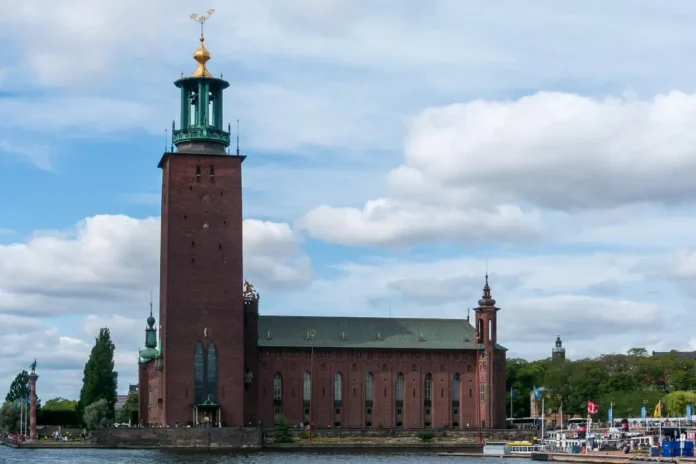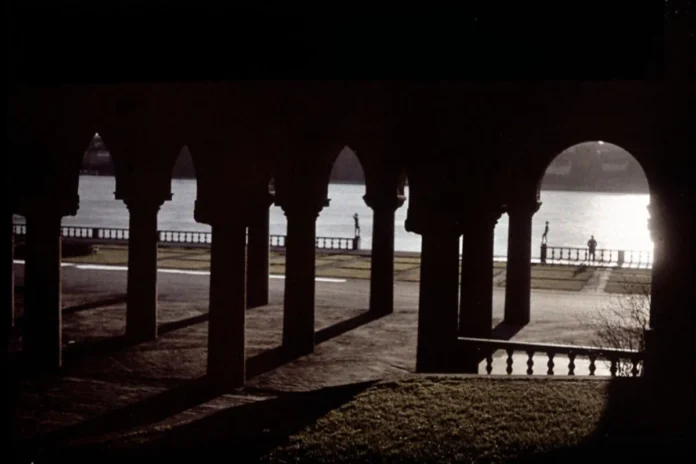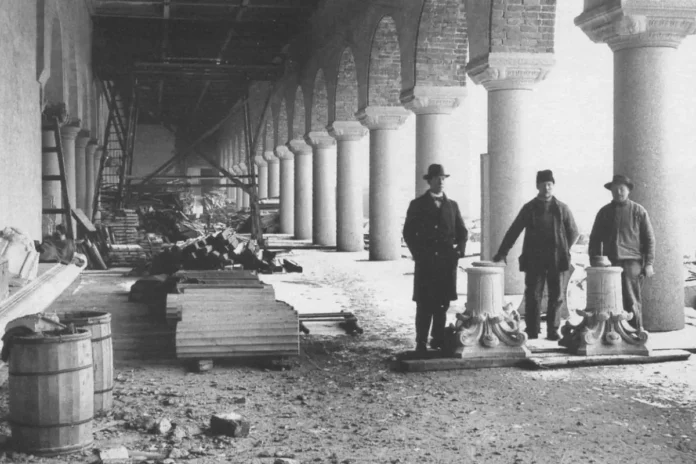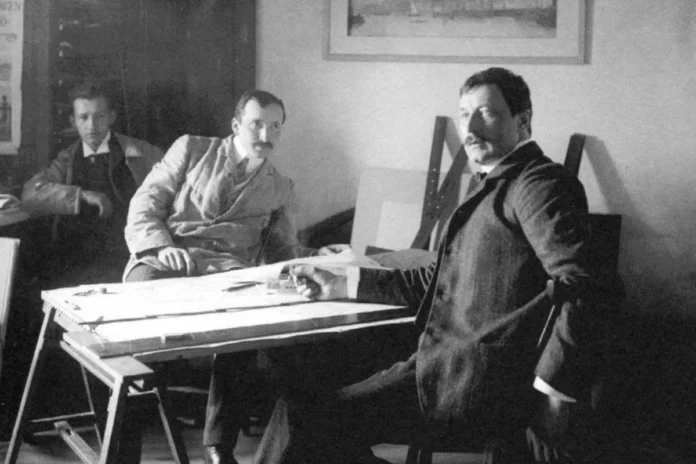The municipal structure known as Stockholm City Hall, or Stockholms stadshus in Swedish, is situated in Sweden’s capital city of Stockholm on the eastern side of Kungsholmen Island. It essentially houses the municipal government’s offices and serves as the banquet hall for the annual Nobel Prize banquet.
A marvel of national romantic architecture
Between 1911 and 1923, Swedish architect Ragnar Östberg designed and built the city hall in Stockholm in the then-popular National Romantic style. In 1909, he emerged victorious in the competition to design the new city hall. The building’s construction required over 8 million bricks and over 19 million tiles, making it an enormous undertaking. Additionally, three golden crowns, Sweden’s national symbol, adorn the city hall’s 106-meter-tall tower.
Many consider the Stockholm City Hall as one of the most significant pieces of early 20th-century Swedish architecture. It is a historic landmark that displays the period’s architectural and cultural legacy.
Main attractions of the Stockholm City Hall
The City Hall in Stockholm is one of the most popular tourist destinations and offers a number of intriguing attractions for tourists. Here are some of the main highlights:
- The Nobel Prize banquet is held annually in the Blue Hall, the city hall’s main banquet space. The hall is well-known for its majesty and unusual shade of blue. The 10 million mosaic tiles that cover the walls are the source of this color.
- Located adjacent to the Blue Hall, the Golden Hall is decorated with more than 18 million gold-leaf mosaic tiles. The tiles show scenes from mythology and history in Sweden.
- The Tower: To get a broad perspective of Stockholm and the neighboring islands, visitors can ascend the tower. The tower is 106 meters tall and has three observation decks.
- The Prince’s Gallery: This is a long hallway that runs along the outer edge of the building. It offers views of the waterfront and the city.
- The Council Chamber: The Stockholm City Council holds its meetings here. Moreover, frescoes adorn the room, as well as a throne for the mayor.
- Guided tours: Visitors can take guided tours of the city hall to learn more about its history, architecture, and significance.
Venue for the Nobel Prize: A celebration of excellence
The Nobel Banquet is an annual event that takes place in Stockholm City Hall on December 10th, the anniversary of Alfred Nobel’s passing. It is a formal and distinguished dinner that concludes the Nobel Prize presentations. The purpose of the banquet is to honor and celebrate the Nobel Laureates in the fields of economic sciences, literature, physiology or medicine, chemistry, and physics.
Dignitaries, Nobel Laureates, members of the Swedish royal family, and visitors from other countries attend the Nobel Banquet. Usually, speakers deliver speeches, musicians perform, and chefs serve a sumptuous multi-course meal at the event. Additionally, officials present the laureates with their diplomas and Nobel Prize medals.
The construction of the Stockholm City Hall
The massive project of building Stockholm City Hall took more than ten years, from 1911 to 1923. Notably, the building was designed by Swedish architect Ragnar Östberg, who won the 1909 design contest for the new city hall. Here are some key features of how they constructed the city hall:
- Materials: More than 8 million bricks and 19 million tiles went into building the structure. Furthermore, the tiles’ varied decorative patterns and designs give the building its unique appearance.
- Foundation: The construction crew thoroughly excavated and fortified the site before building the city hall on solid rock.
- Structure: A steel frame supports the exterior brick and tile work of the building. The main building anchors the separate tower structure.
- Architects created the building in the then-popular National Romantic style in Scandinavia. Essentially, the design combines Swedish folk art and mythology with Gothic and Renaissance architectural elements.
- Decoration: The building’s interior is embellished with mosaics, murals, and frescoes that portray Swedish history and culture. Additionally, with millions of tiles arranged in elaborate patterns, the Golden Hall and Blue Hall are especially elaborate.
Overall, building Stockholm City Hall was a huge project that needed to be completed by talented engineers, architects, and craftspeople. It is now regarded as a true architectural wonder and one of the most significant examples of early 20th-century Swedish architecture.
Other attractions near the City Hall
- Situated on the neighboring island of Riddarholmen, the historic Riddarholmen Church (Riddarholmskyrkan) serves as the Swedish monarchs’ final resting place.
- One of the biggest palaces in Europe, the Royal Palace (Kungliga Slottet), is the official residence of the Swedish monarch and is situated in the Old Town (Gamla Stan).
- Old Town, or Gamla Stan, is a quaint medieval neighborhood with cobblestone streets, old buildings, stores, and eateries. It is among Europe’s best-preserved medieval city centers.
- The Swedish Parliament (Riksdagshuset): The seat of the Swedish parliament, located on Helgeandsholmen island, is just a short walk from City Hall.
- A popular public square in the heart of Stockholm, Sergels Torg is renowned for its lively atmosphere and modernist architecture.
- Klara Church (Klara Kyrka), a striking church close to Sergels Torg, has become renowned for its lofty spire and exquisite interior.
- National Museum of Fine Arts (Nationalmuseum): Sweden’s premier museum of art and design, also located on the waterfront.
These attractions provide a mix of historical, cultural, and recreational experiences, all within reach of Stockholm City Hall.




















